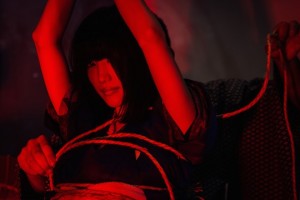Hajime Kinoko ties models to outside of building for Harajuku shibari rope bondage installation
Shibari, the Japanese art of rope bondage, is a sexual subculture, something confined to certain clubs and establishments, right? Wrong.
As one event proved, shibari (also known as kinbaku) is also very visible in the streets of Tokyo.
On May 7, Hajime Kinoko, probably the most successful and well-known shibari rope artist in Japan, created an outdoor installation on the walls of a venue in Cat Street, a shopping street in Harajuku, central Tokyo.
The installation involved him and his team suspending five female models (one of whom was Lisa M, aka Lisa Mizuno) in shibari positions on the outside walls of the building. When this was complete, someone skateboarded in front of the building, which was perhaps meant to represent the Harajuku element of the show.
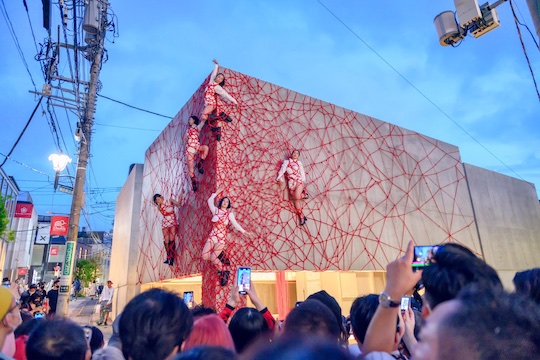
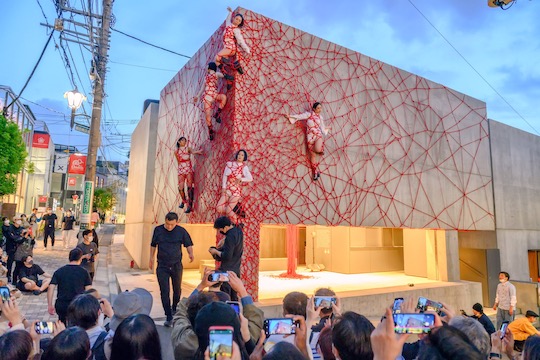
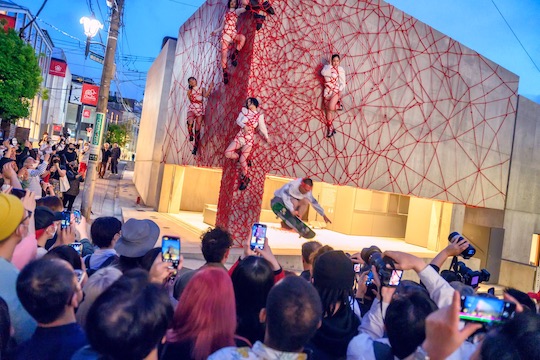
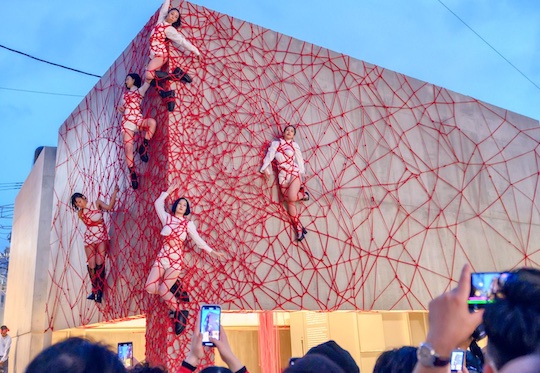
What to call this? A shibari show on an outside wall? A shibari-ed building? Guerrilla rope bondage?
Given the very public nature of the event and location, it naturally attracted huge crowds of passersby, who were quick to take pictures. Shibari is, after all, also Instagrammable.
The building was StandBy, an art space that hosts exhibitions. The inside of the venue also housed a shibari installation for the week-long show that ended on May 8.
Hajime Kinoko’s video of the event, which he posted on Twitter, has attracted over 1 million views, and the installation was covered by major fashion media. Is shibari now officially mainstream?
原宿のキャットストリートの野外で、人を5人も吊りました。
ポジティブな観覧者様達に囲まれ、感無量です。 pic.twitter.com/9BpP5z9NpY— Hajime Kinoko (@Shibarijp) May 7, 2022
However, the event also quickly attracted criticism and controversy, as shibari often does. The performance/show in which the female models were tied up and displayed took place in the early evening, when families and young children were in the vicinity. It also resulted in crowding in the street at a time when coronavirus infection numbers remain high in Tokyo and people are exhorted to socially distance at all times. Some also questioned the safety of tying the models onto the wall.s And as is common, the event drew negative responses from some who viewed it as objectifying and denigrating women.



